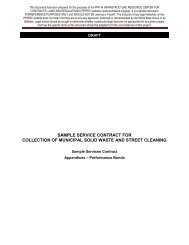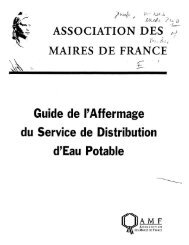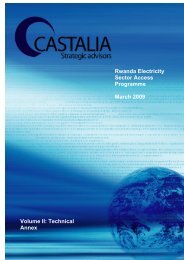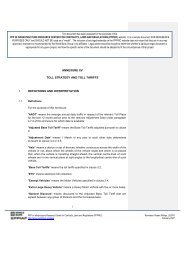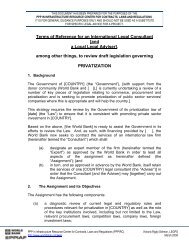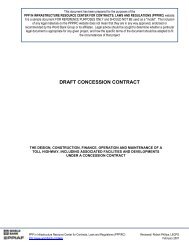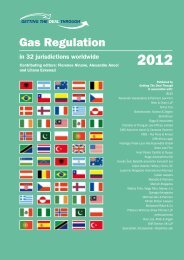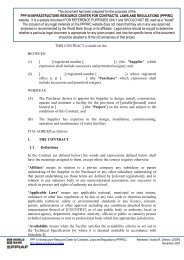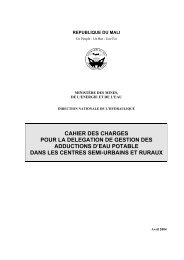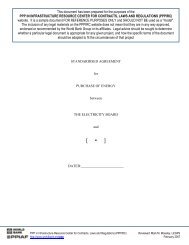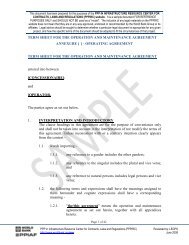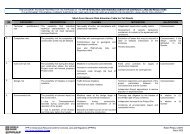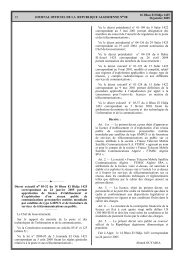Volume I: Investment Prospectus Rwanda Electricity Sector Access ...
Volume I: Investment Prospectus Rwanda Electricity Sector Access ...
Volume I: Investment Prospectus Rwanda Electricity Sector Access ...
- No tags were found...
Create successful ePaper yourself
Turn your PDF publications into a flip-book with our unique Google optimized e-Paper software.
The average contract size is expected to be more than double the size of current contracts.This scale will enable existing local contractors to increase their capacity and will also attractinternational contractors to <strong>Rwanda</strong> to compete for connection contracts. Similarly, thecapacity to supply other required materials will be enhanced by the scale of the accessprogramme. The Government will work with private investors to ensure that local suppliersare able to compete for contracts under the access programme. However, some materials(such as power poles), will initially be imported until the <strong>Rwanda</strong>n market develops.Significant opportunities also exist to reduce costs by changing the technical specificationsused in electrification projects. Some possible changes are discussed in Box 5.1 (below). Thenational electricity utility has established a working group to investigate opportunities toreduce costs by changing technical specifications.Box 5.1: Reducing Programme Costs by Changing Technical SpecificationsA major cost component of the access programme is the per kilometre cost of newmedium voltage (MV) distribution line. Distribution line costs have traditionally been veryexpensive in <strong>Rwanda</strong>, 19 and work is underway to reduce these costs for the accessprogramme.One way to lower the cost of new MV power lines is to revise the technical specificationsapplied in recent electrification projects to use steel lattice-framed towers for new MVlines. Comparable investments throughout Africa use wooden poles, which are muchcheaper and provide similar levels of performance. Concrete poles are also feasible for newMV lines, can be sourced at a significantly lower cost than steel lattice-framed towers, andcan be manufactured locally (given sufficient volumes). The following pictures illustrate thetraditional technical specification used in <strong>Rwanda</strong> (left), and a comparable wooden poleoption used in other parts of Africa19 A recent electrification project in <strong>Rwanda</strong> undertaken by the Tunisian utility (STEG) cost $48,000 per kilometre of MVline for studies, equipment, transport and insurance. This was for a project of 4,000 connections.43



